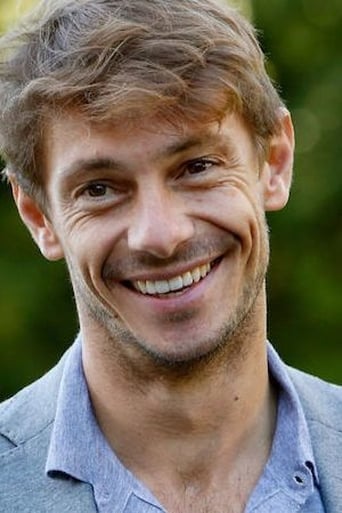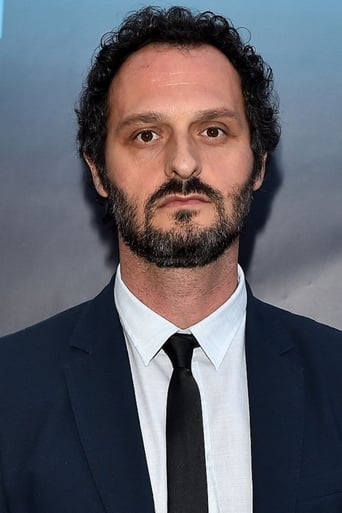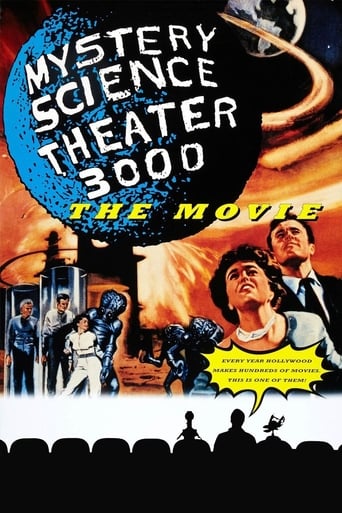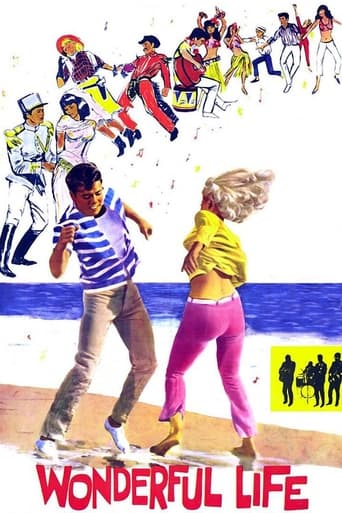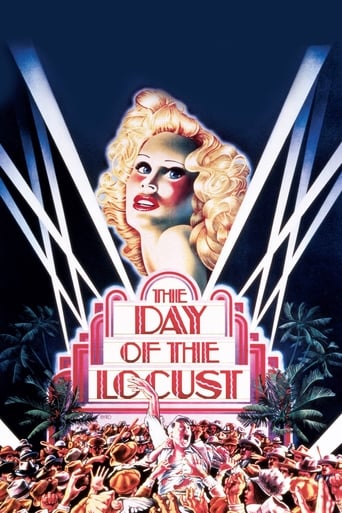

After Midnight (2004)
A beautiful fugitive draws a shy film buff out of his shell while she hides in the museum — the cavernous interiors of the Mole Antonelliana in Turin, Italy — where he works as night watchman.
Watch Trailer
Cast
Similar titles
Reviews
Don't listen to the negative reviews
The film creates a perfect balance between action and depth of basic needs, in the midst of an infertile atmosphere.
This is a coming of age storyline that you've seen in one form or another for decades. It takes a truly unique voice to make yet another one worth watching.
This is one of the best movies I’ve seen in a very long time. You have to go and see this on the big screen.
This is a spectacular achievement, of a perfectly-judged fable whose every moment and every detail is successful. It was made on a shoestring (they even had to wheel the camera in a supermarket trolley because they could not afford a dolly), but the production values look like and feel like a big-budget movie. The cinematography is deeply intriguing, partially due to the use of a highly light-sensitive digital camera, which is able to film in dark and moody places by natural light. Davide Ferrario, the writer, producer and director, is a unique cinematic artist. It is insufficient to call him brilliant, and even the word 'inspired' seems too tepid to do him justice. I would prefer to call him 'a force', like the wind or the waves. This magical film captures a kind of metaphysical power of the imagination, which transforms reality in front of our eyes. All except one member of the cast were unknowns. The project was a huge risk. But the result is a complete triumph. The casting was perfectly judged, and the performers more than delivered the goods. The only one with experience, Giorgio Pasotti, says little because he plays a silent character, but evokes the character's inner being with total success. Even more astounding is the performance by Francesca Inaudi, and she is more than 'a natural', she is a 'supernatural', whose facial muscles were designed for film-making. Another star of the film is a bizarre and gigantic building in the city of Turin called 'the Mole'. It is one of the most mysterious film sets ever used, and what is more bizarre, it is all real. Nothing about this film is 'normal', thank God, since what is more boring than normality? And yet nothing is abnormal either, it is just that it is all happening in the imagination, which transcends the difference. Two stories intersect, like two intersecting light-cones in space-time, and from the crossing of their beams, brilliant and scintillating interference patterns emerge, and then the individual stories are re-directed and electrons and positrons spray out in different directions. The film is about a collision of two parallel universes. No, three. The third is us.
Monday May 23, 9:30pm Neptune Theater, Thursday May 26, 4:30pm The Harvard Exit"For one person to be happy, another has to cry." Ironic humor, pathos and a profound respect for tradition are the sentimental foundation for this tale of Martino and his secret love for Amanda, his fast food muse. He is night watchman at the Mole Antonelliana, the unrealized synagogue turned National Museum of Cinema in Turin. Bound to tradition, represented in his Grandfather, but searching for his own identity through the vast archives he is entrusted to protect, Martino lives in a cinema purgatory of his own creation, relating more to his world of gadgets, Buster Keaton and the Lumiere Brothers than living breathing humans. Our perspective is via his first person narrative, at times more naive and youthful than we might expect. She is the wannabe bad girl, submissive girlfriend of hoodlum biker Angel. Amanda is part Fendi model, part Flora from Botticelli's la Primavera, stuck in a greasy red and yellow tile burger hell. When she deep-fries her idiot bosses trousers while he's wearing them, she seeks refuge from the police at the Mole to the surprise and amazement of Martino. This film pays homage to film. The cavernous, sacred setting, almost another character itself, Martino's lofty digs, his awe of Amanda and her peril suggest The Hunchback of Notre Dame. A bicycle ride with his girl on the handlebars is straight out of Butch Cassidy. He revels in the world of slapstick comedy from the silent era and it's overt, swooning, tinted romance. The humorous and almost sad sound of the Banda Tradizionale repeated throughout the picture brings to mind Fellini's Amacord. Martino executes the physical pantomime and one perfect wheeling turn, as Chaplinesque as Johnny Depp's dance of the dinner roles from Benny and Joon. In the end, Amanda, torn between Angel, an unfaithful dog, and Martino, an adoring puppy, reflects, and decides, not to decide. The final homage is a blessing, "Two boys and one girl? I saw a French movie once." "Was the ending happy?" "They died." The biggest problem with such an obvious reference is the inevitable comparisons, these three lack the depth and freshness of characters from a legend of the New Wave they seek to imitate. While very sweet and oh so curious, Franchesca Inaudi's Amanda hasn't the fire and soul of Jeanne Moreau's Catherine. Giorgio Pasotti's Martino and Fabio Troiano's Angel are merely dim reflections of those they seek to imitate. But hey, Icarus was having a great time until... Written, produced and directed by journalist filmmaker Davide Ferrario, After Midnight is filled with pleasing and unusual images, the first and last we see, dust, floating in space. An iconic, towering, fifty foot image of Anita Ekberg, la Luna, again and again, as though the darkness of the world at night becomes the darkness of the cinema, Amanda's dream of freedom, running, as she sleeps safely in Martino's bed, the flickering nickelodeon, literally walking and living in the camera obscura, the closing aperture of the lens. Comedy is always there, thieves drowning a car alarm in a bucket of water, the handyman Ivan, dropping from the sky for his morning coffee, Martino using his tiny antique camera to film Amanda's underwear, drying on a clothesline, two-bit gangsters singing karioke, badly, and Martino's constant eating of apples, "I hate the double fry special. I like apples," and Amanda realizes he wasn't there for the burgers, his secret love revealed. "Always leave them wanting more," may always bring them back, but the unrealized also leads to frustration and disappointment. While on the right track, hopefully Ferrario learns and improves in subsequent films. Still, After Midnight is a sweet, endearing story of love, the movies, love and the movies and love of the movies. "Tales are like dust. Movies may end but cinema never."
This film is a treat for all cinema lovers. This quirky comedy and love story about a modern Buster Keaton-like character takes place in the amazing Mole Museum of Cinematography in Torino, Italya place that is now on my list of places to visit. As the narrator informs us, this is story just as much about places as it is people. A sense of nostalgia weaves the film together with elements of classic silent film techniques, quirky slapstick comedy and expressionism. 3 different film formats are used in shooting this film. The combination of 35mm, digital video and 9.5mm make this film a feast for the eyes. Ferrario utilizes the ever-classic iris in and iris out transition effect as a delightful homage to Keaton and other classic filmmakers of the day. He cleverly draws parallels between the characters in the film and characters in the classic films by cross-cutting between clips of Keaton and a German expressionist film (i don't believe i can't remember which one) and the main characters Martino (Giorgio Pasotti) and Amanda (Francessa Inaudi). The unbalanced lines in the mise- en-scene give a sort of throw back to expressionism, which works well in representing the character of Amanda.Ferrario makes many different allusions that are fun to connect, such as Fitzgerald's "eyes of TJ Eckelburg, Fibonacci's numbers, and of course the works of Buster Keaton. In and out this film is just a joy to watch. Stylistic, yet simple, and if nothing else charming.
The 2004 new movie by one of the most intriguing Italian directors. Despite of a low budget and a not-famous cast (except for the narrating voice), this movie is purely entertaining and involving: fascinating sequences inside the Turin's wonderful Mole, actual venue of the most important Italian cinematographic museum. Not-so-profound characters and dialogs, and sometimes a bit of inaccuracy in playing, but a sincere view in the struggle for love, solitude and boredom. Very nice editing with sequences of early cinema movie clips, especially by Buster Keaton.
